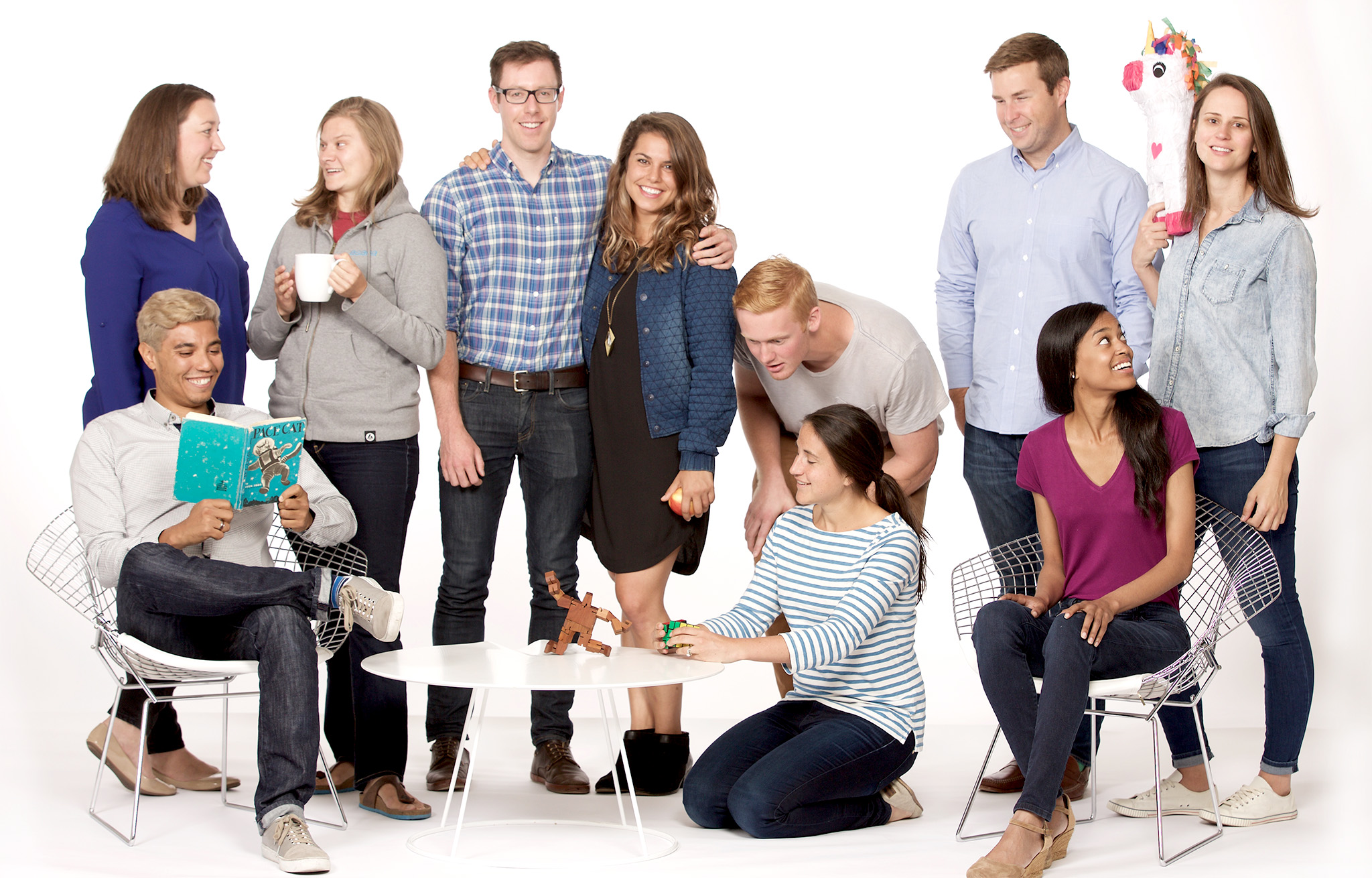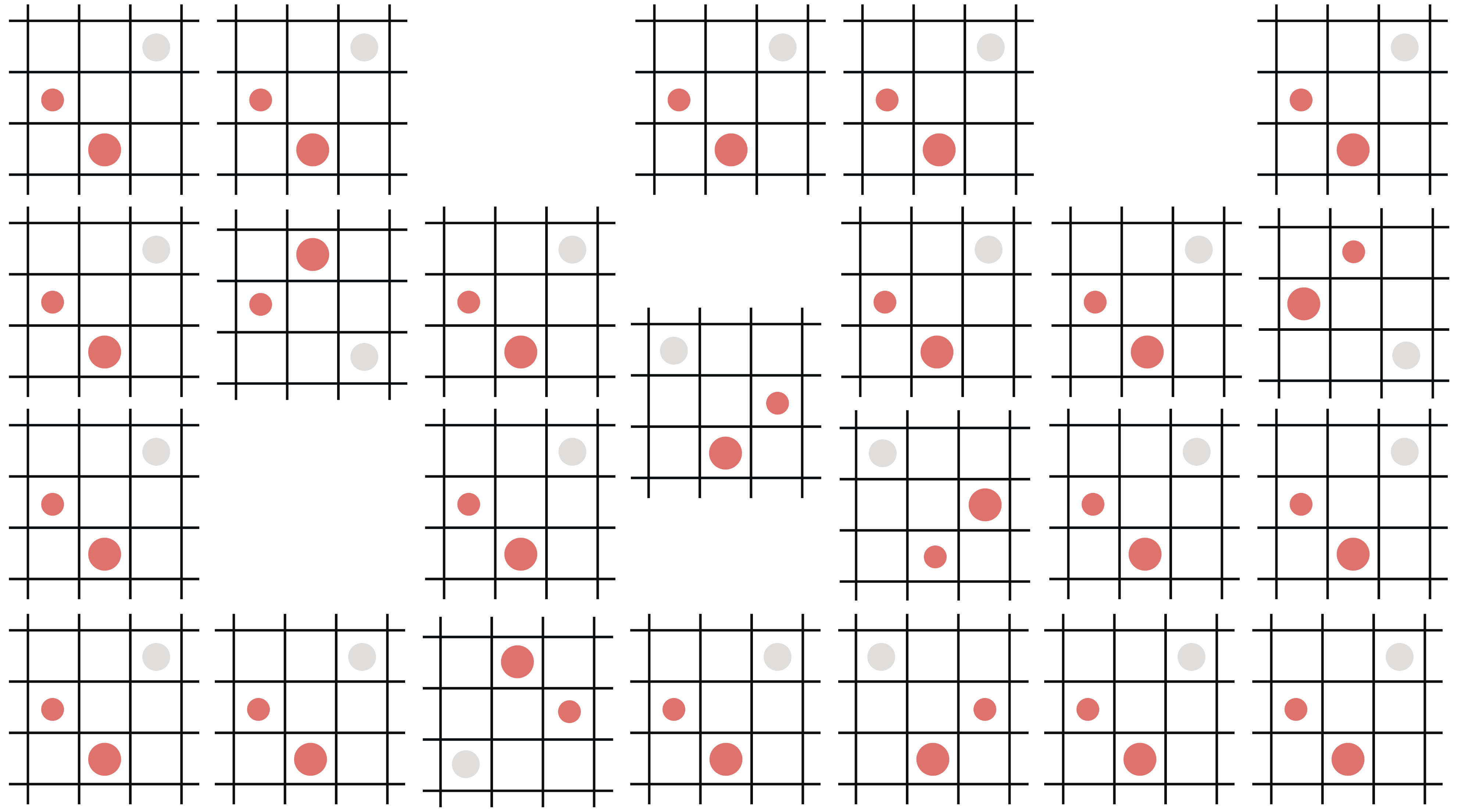Putting the “fun” back in funnel: the Asana Marketing team

This week, we’re digging into how marketing teams use Asana, and we thought it could be interesting to talk to Asana’s own Marketing team. They’re the folks who write this blog, run our social media accounts, track visits to our website, and add personality to work tracking.
We talked about how they work, the challenges of B2B marketing, and what it’s like using the very tool they market every single day. We spoke with:
Emily Kramer, Lead
Reigan Combs, Lifecycle
Emilie Cole, PR
Jenny Thai, Content
Anna Hurley, Designer
Josh Torres, Social media
Stephanie Marden, Coordinator
Our conversation has been edited for clarity and brevity (there were a lot of inside jokes).
What brought you to the Asana Marketing team?
Reigan: I came from a big company with a mature brand and product, so I was excited to go somewhere that was—
Emily (interrupting): Immature?
Reigan: —younger, where I could help build something from the ground up. I’ve since gained so much awareness of the market, and have helped define what our customer lifecycle and users’ experiences look like.
Emilie: To be successful as a marketer, you have to have a clear vision and understanding of what you’re marketing: what is the story you’re telling and why are you telling it? I joined because Asana is very clear on who it is and what it wants to be.
Jenny: The biggest draw for me was how much I’d be able learn here. I also thought it was the perfect mix: everyone I met was super-scary-smart, but also really hilarious and fun.
Emily: After working at several B2B companies, where marketing’s role was largely sales enablement, I specifically wanted to go to a B2B company with a freemium model. Marketing at a company like Asana allows for more than just top-of-funnel marketing; you’re marketing throughout the product lifecycle and in the product.
How is the Marketing team at Asana different from other teams you’ve worked with?
Jenny: I’ve worked at a few other startups and I often felt like I was reacting to stuff or doing one-and-done projects. At Asana we work on big projects, but we also do core program work. Either way, it’s always clear what we’re working towards.
Anna: I came from an agency background, which meant working with a bunch of different brands. I was really excited to join and focus on one brand.
What would you say are some of the biggest challenges facing the team?
Jenny: Finding enough time to do all the writing I need to do! Bigger picture: getting better about how we measure content effectiveness.
Emily: Hiring. We’ve tried to maintain a really high standard in hiring, which gets harder when you’re hiring for specific things. And continuing to hire while maintaining culture and aptitude level is a challenge because, well, without people, we can’t do all the things we’d like to do.
Josh: Continuing to make sure that people understand the value of a work tracking tool, which may not be something that they’ve used before. We’re not just replacing something that people already use, we’re creating a new type of product and providing a different way to work.
What’s been the most impactful project you’ve worked on and what did you learn?
Stephanie: Our rebrand and relaunch. There were what seemed like a million moving pieces, and it was a great opportunity to learn from and observe how an organization can come together.
Reigan: This January we launched our first integrated marketing campaign across channels—with a substantial media budget—and everyone on the team was involved. It got us thinking about how we accentuate Asana in different parts of our business lifecycle, in annual cycles.
Josh: I actually think the small things we do every day have the biggest impact on our business. The fine-tuning and experimentation of our business is as important as some of the bigger moments that people see in the marketplace.
What’s so hard about B2B marketing?
Jenny: I think there’s this false assumption that if you’re a B2B buyer then all your decisions are logical and linear, and that, on the consumer side, it’s all based on emotions. It’s not that clear cut. Traditionally, B2B marketing has relied more on long white papers and PDFs that give buyers a bunch of facts and information. But those buyers are also humans. They have emotions and they respond to delightful things.
Emily: Because people have traditionally relied on content in the form of PDFs, case studies, white papers, and gated content, it’s scary to try to think about how you market for B2B without doing those things—and it inherently takes longer to think about new ways to do things.
Purely web-based marketing is a challenge, and it sometimes takes longer to get the results you want. But we trust that the long game is better than the short game, i.e., gating your content just to get an email address. Building a brand, and providing value through what you’re creating, means it takes longer to see results.
It’s all about finding a balance between having fun at work and being serious enough that people want to buy your software and trust it with all of their important data.
Reigan: It’s more of an interesting challenge for me. In B2C marketing, you think of the single “Aha!” moment that a user has. Our challenge is to give an entire team an “Aha!” moment collectively, which is much more challenging to solve for.
“It’s all about finding a balance between having fun at work and being serious enough that people want to buy your software and trust it with all of their important data.”
How has using Asana changed how you work?
Emily: I get asked a lot about how we stay connected with the product team, or how we know what everyone’s doing on the marketing team, or how we have so few managers, or how we’re so connected to our goals. The simple answer is, “we use Asana.”
Jenny: Now that all my work is in Asana, I feel much more focused and efficient. I’ll come into work and see that I have a lot of stuff on my plate, but at the end of the day I feel like “wow, I got everything done.”
Reigan: At Asana, anyone can see the state of anything you’re working on at any time. It’s brought my guard down and helped me do things more quickly because I can get feedback sooner. It’s made me more comfortable with sharing progress earlier on, which I think makes me more efficient in the long term.
Anna: It makes me a lot less precious about what I’m working on. I get a lot of feedback in critiques and reviews, but because I put my work into Asana and people will comment, I can always go back and reference it.
What is your favorite part about the Asana Marketing team?
Emilie: I’m surrounded by the smartest marketers—
Emily (interrupting, again): Smarketers?
Emilie: Yeah, we’re Smarketers. Everyone is down to earth, and, well, I just love my team.
“Yeah, we’re Smarketers. Everyone is down to earth, and, well, I just love my team.”
Stephanie: I’m able to learn from my peers a lot, but I also have fun with them.
Reigan: I’m excited that we have a well-defined marketing funnel! It’s the corniest thing, but it’s such a joy to be working towards raising those metrics.
Emily: I think producing consistent quality work is not something that every team takes the time to do, or that every company values. Having a team that will take a lot of feedback, incorporate it, and produce quality things while moving quickly is hard to find. It’s fun because we’re doing work that we’re proud of.
Jenny: The people, and our mutual love of LaCroix.
If you’re interested in putting the “fun” back in funnel, we’d love to hear from you.

